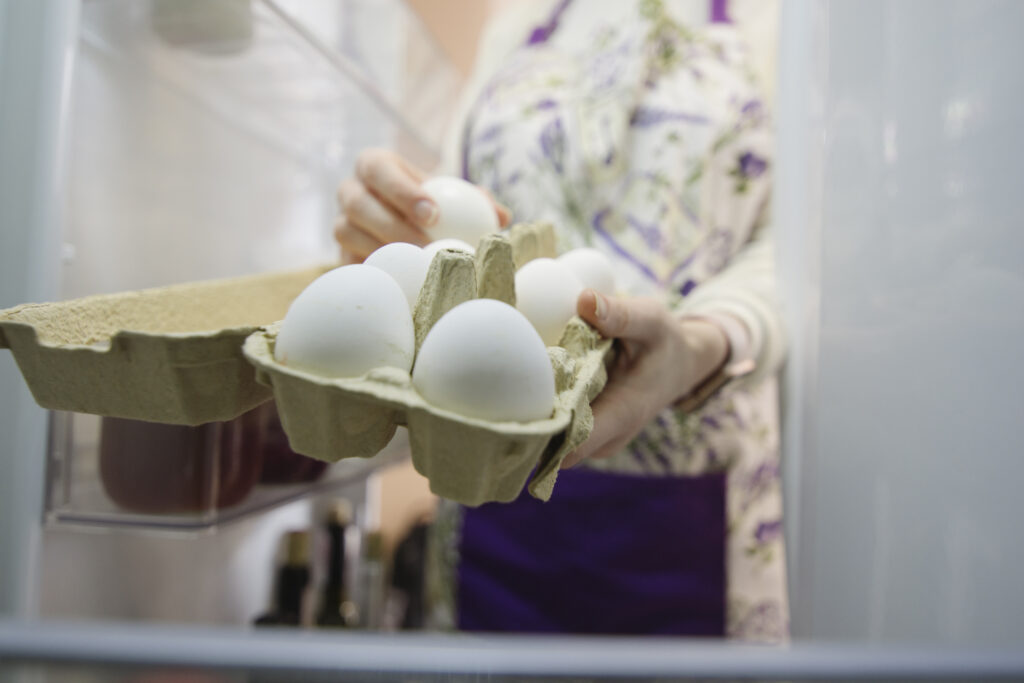
Happy spring! I wrote recently about updating our daily menus as we welcome warmer weather. Refreshing our kitchen isn’t just a culinary shift, but also cleaning out and making space for new ingredients. Here’s a guide to embracing this timely task with a bit more ease.
What Do All the Dates Mean?
Cleaning out your refrigerator, freezer, and pantry may leave you with unopened or half-used jars, bottles, and other containers. If so, here are some tips for interpreting the dates printed on the packaging.
Phrases You’re Likely to See
- “Best if Used By/Before”: The date with the best flavor or quality, but not a purchase or safety date.
- “Sell By”: This is the date a store must sell a product by, but not a safety date.
- “Use By”: The date that a product should be used by for peak quality, but not a safety date (except on infant formula).
- “Freeze By”: Freeze by this date to maintain peak quality, but it’s not a purchase or safety date.
Egg Carton Pack Date
This is the date eggs are washed, graded, and placed in the carton. You see it as a three-digit code that reflects the day of the year (for example, January 1 is 001, while December 31 is 365). State laws (not federal) determine whether or not eggs have a sell by or expiration date. To maintain quality, store eggs in the coldest part of your refrigerator.
What About the Expiration Date on Organic Milk?
Maybe you have noticed that your organic milk has a very far-off expiration date. This date reflects the ultrahigh processing that all organic milk endures for safe transport (especially to parts of our country without organic dairy farmers). It doesn’t impact the macro and micronutrient composition (except for minor differences in some sensitive vitamins). However, once you open organic milk, use it within 7-10 days, regardless of the expiration date.
What’s Hiding in the Freezer?
Your spring cleaning is also likely to uncover wrapped food from the corners of your freezer. Freezing is “nature’s preservative,” but food will diminish the longer it’s stored. Here are some tips for safely managing frozen foods:
Freezing and Food Safety
Freeze food as soon as possible, following safe freezing guidelines to maintain freshness and reduce bacterial growth. Be sure to freeze food in tight packaging, then label and date it. If you’re freezing a casserole or another make-ahead dish, write the reheating directions right on the package.
Safely Defrosting Foods
It’s tempting to defrost foods on the counter, but this isn’t recommended. Instead, follow safe thawing tips—ideally, plan to defrost foods in the refrigerator. Alternatively, you may be able to microwave or safely thaw food in cold water.
Can I Refreeze Foods?
If you realize that you defrosted too much food, it is safe to refreeze. There may be changes to the quality of the food when frozen/defrosted again, but it’s safe to eat.
Keep Sustainability in Mind
Cleaning out your pantry, fridge, and freezer can be a draining chore. And then you have to dispose of all the unneeded jars, cartons, and wrapped foods. In honor of Earth Day, let’s take the extra step and throw things out in the most environmentally sound way.
Recycling
Recycling is still a good way to reduce waste, but you must do it correctly (appropriately cleaning materials, for example). While there are some general guidelines on what you can recycle, it’s a good idea to learn your state guidelines.
Composting
Composting reduces emissions, enriches soil, and is especially beneficial for your home garden. You can compost food scraps, eggshells, coffee grinds, and more. If maintaining a composting pile at home doesn’t interest you, you may be able to contribute to a community compost pile.
Looking to make your grocery shopping a bit “greener” too? Check out these tips.